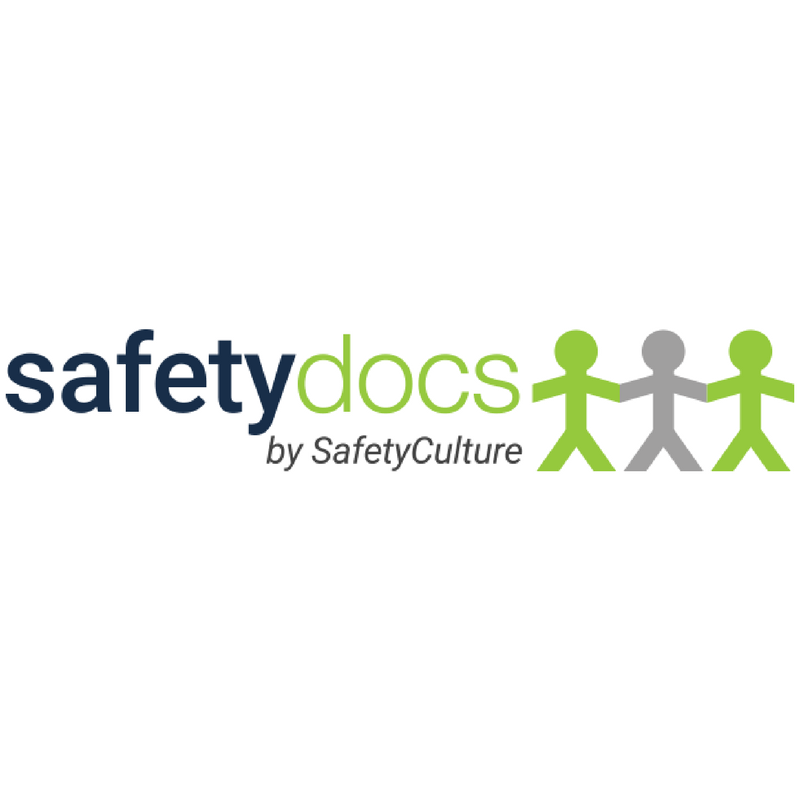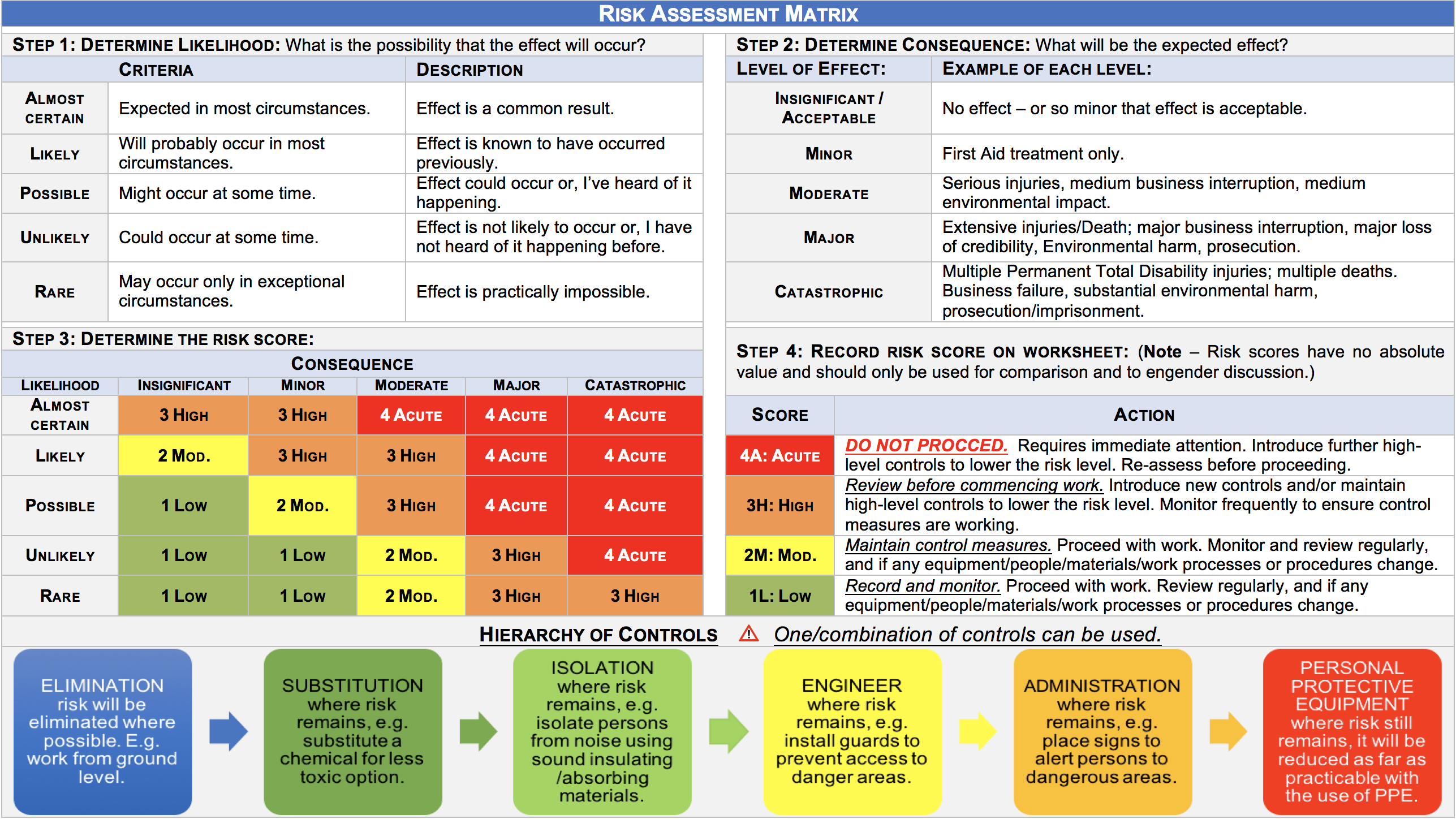Title Page
-
Prepared by
Job Safety Analysis Guidance Sheet
Job Safety Analysis Guidance Sheet
Introduction:
-
Job Safety Analysis (JSA) is a simple process that means looking at a specific work site and identifying hazards that may be present on that site and establish safety control measures (preventative measures) to prevent harm to life, health, property or the environment on each day work is to be undertaken.
The simplest way to carry out a JSA is to get those involved in the work task / activity to break it down into a series of steps. Those involved in the work task / activity could include:
• Site Manager
• Supervisor
• Relevant Workers
• Contractors
• Health and Safety Representatives.
Stage 1.
-
Complete the Site Assessment & Emergency Management sections
Stage 2.
-
Identify the job tasks, job procedures (including any high-risk work), documentation and/or preparation required and who is involved with the work
Stage 3.
-
Identify the potential hazards associated with each of the tasks, including the environmental conditions, location and human factors for the specific work site on that day.
a) A selection of hazards are listed as examples - delete / modify / add hazards to this list as required
b) Each of the listed hazards must be risk rated using the Risk Matrix. The purpose of this process is to determine the likelihood of occurrence and the seriousness of possible consequences. This will then assist in selecting suitable risk control measures.
c) The selection of suitable risk control measures is the critical step in completing the JSA.
d) Determine the residual risk level. This is the level of risk for a hazard once the designated controls are in place.
Stage 4.
-
Once the control measures are established it is important that the hazards and risks are regularly monitored during the work. The person responsible for ensuring that this occurs should be listed.
Stage 5.
-
Hazards and risks should be re-assessed when appropriate and/or as required by legislated requirements. The person responsible for ensuring that this occurs should be listed.
Stage 6.
-
Worker Sign off
Summary - Key Outcomes:
-
• Consult those involved in the work task / activity at this site
• List the work tasks to be performed on this site
• Identify the hazards associated with this site that may affect the conduct of safe work
• Establish the risk levels associated with those hazards
• Develop effective risk control strategies
• Establish that the risk has been eliminated / reduced; due to the selection of the risk control measures
• Ensure all persons involved in the work task / activity are aware of hazards present on this site and the control measures that are implemented to reduce associated risks
• Ensure that any changes in the work task, the site, environmental conditions or the working conditions are monitored, re-assessed and updated in the JSA as required
• Ensure the relevant workers and Persons Responsible sign off as appropriate on the JSA.
Risk Assessment Matrix and Control
-
Determine the risk score using the Risk Assessment Matrix image below. Once determined, record the risk score on worksheet (NOTE - Risk scores have no absolute value and should only be used for comparison and to engender discussion.)
-
Stage 1. Workplace Assessment
JSA Conducted By:
-
Name:
-
Job Role:
-
Contact Number:
Workers Involved and Consulted with During this JSA:
-
Workers consulted:
Worker
-
Name:
-
Job Role:
Primary Contractor / Workplace Owner Details:
-
Business Name:
-
Contact Name:
-
Address:
-
Phone:
Workplace Map
-
Workplace description (layout, features, boundaries of the workplace):
-
Workplace Plan (Sketch a plan of the workplace and upload/take a photo):
Emergency Management
-
EMERGENCY:
- Evacuate all persons at the workplace to designated assembly area
- Lock down the workplace if possible
- CALL 000 -
Evacuation Point / Assembly Area:
-
Emergency Contact Numbers
Emergency Number
-
Emergency Contact Number:
-
First Aid Kit Location/s
First Aid Kit Location
-
Location:
-
Safety Officer/s Contact Details
Safety Officer
-
Name:
-
Phone:
Stage 2. Identify the job tasks, job procedures etc.
Job Description and Work Procedures
-
Job Steps (List the main tasks that will be performed on this workplace)
Job Step
-
Job Step:
Workers / Work Group
-
Name:
-
Safe Work Method Statements (SWMS) List
SWMS
-
SWMS Title:
-
Have all workers been trained in the SWMS?
Documents
-
Work Permit/s completed and signed?
-
Entry Permit/s completed and signed?
-
Hazardous Chemicals Register at the workplace?
-
Hazardous Chemicals Manifest at the workplace?
-
Safety Data Sheets at the workplace?
Electricity
-
Energised?
-
De - Energised?
-
Isolated?
-
Locked Out & Tagged?
-
Permit No. (if applicable)?
Undergroud Services
-
Dial Before You Dig plan?
-
Electrical Services?
-
Gas Services?
-
Water Services?
-
Communications?
Does the work involve any of the following High Risk Construction Work?
-
Confined Spaces
-
Powered Mobile Plant
-
Demolition
-
Asbestos
-
Using explosives
-
Diving work
-
Artificial extremes of temperature
-
Tilt up or pre-cast concrete
-
Working at depths greater than 1.5 Metres, including tunnels or mines
-
Pressurised gas distribution mains or piping chemical, fuel or refrigerant lines energised electrical installations/services
-
Structures or buildings involving structural alterations or repairs that require temporary support to prevent collapse
-
Involves a risk of a person falling more than 2m, including work on telecommunications towers
-
Work in an area that may have a contaminated or flammable atmosphere
-
Work carried out adjacent to a road, railway or shipping lane, traffic corridor
-
In or near water or other liquid that involves risk of drowning
Stage 3. Key Site Specific Hazards
Key Site Specific Hazards
-
List all Hazards Identified During the JSA
Hazard
-
Hazard: (A)
-
Risk Level: (B)
-
Controls in Place: (C)
-
Residual Risk Level: (D)
-
Is it safe for work to proceed?
-
Have all risks been reduced to the lowest acceptable level?
-
If NO, DO NOT COMMENCE WORK, contact your supervisor
-
Do any workers require additional supervision?
-
Who are they:
-
Who will provide the supervision:
Stage 4. Monitoring
Monitoring
-
On-going monitoring of hazards and risks is required for the duration of the work
-
Person Responsible:
Stage 5. Re-Assess
Re-Assess
-
Any new hazards identified during the work are to be assessed and controls put in place
-
Person Responsible:
Stage 6. Worker Sign-off
Worker Sign-Off
-
Worker
-
I have read the this JSA and I understand its contents. I confirm that I have the skills and training, including relevant certification to conduct the tasks I have been allocated to complete. I agree to comply with safety requirements within this JSA including identifying and monitoring hazards and adhering to risk control measures, relevant Risk Assessment, SWMS and permit requirements.
-
Worker Name & Signature:
-
Date:
Company Details
Company Details
-
JSA #:
-
Date & Time JSA Completed:
-
Review Due Date:
-
Workplace Name:
-
Address:
-
Location:















